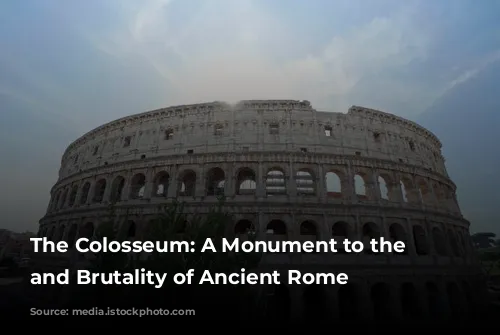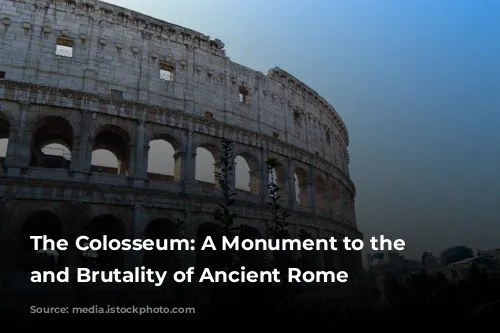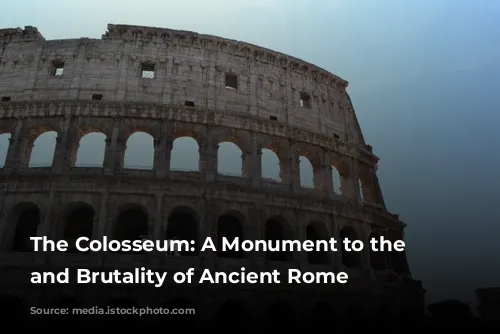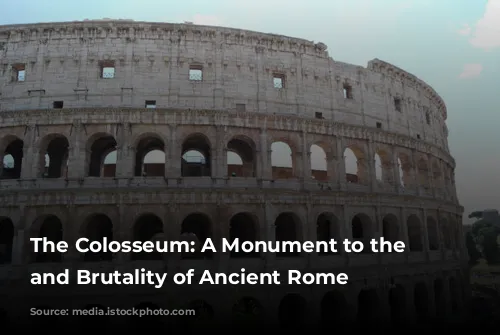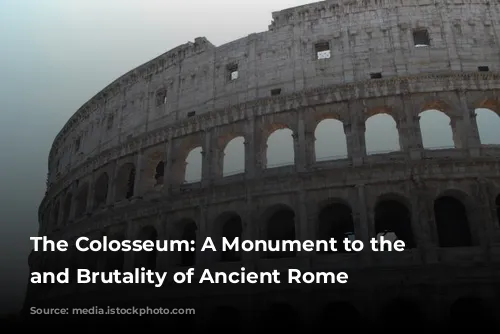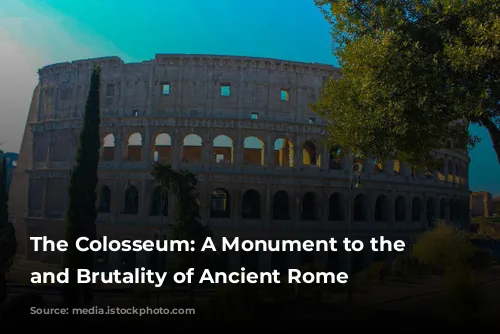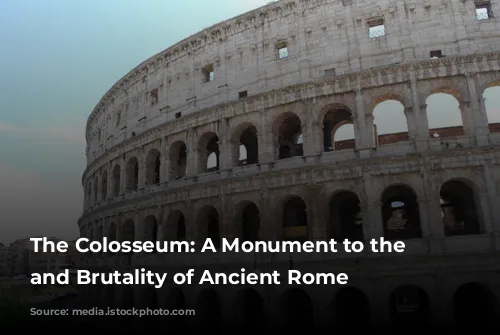The Colosseum, a majestic monument of ancient Rome, stands as a testament to the empire’s power and grandeur. Built by Emperor Vespasian, the Flavian Amphitheatre, as it was originally known, was inaugurated by his son Titus in 80 AD.
The Colosseum’s inauguration was a lavish spectacle that lasted an incredible 100 days. This grand celebration showcased thrilling gladiatorial combats, captivating animal hunts, and even breathtaking naval battles, known as naumachias, where the arena was transformed into a vast lake.
The name “Colosseum” emerged later, possibly inspired by a massive statue of the Emperor Nero, known as the Colossus, which stood nearby. A famous prophecy by the Venerable Bede, a medieval monk, even linked the Colosseum’s fate to Rome’s: “Rome will exist as long as the Colosseum does; when the Colosseum falls so will Rome; when Rome falls so will the world.”
A Masterpiece of Roman Engineering
The Colosseum is a remarkable display of Roman architectural ingenuity. Its elliptical shape, designed to maximize spectator capacity, was constructed using a unique combination of arches and concrete. The Romans’ mastery of the arch, evident in structures like aqueducts, allowed them to efficiently distribute the weight of the massive structure.
The Colosseum boasts four levels, with the first three adorned with a total of 240 arches, many of which were once embellished with grand statues. The arena itself was a complex underground labyrinth with trapdoors, lifts, and elaborate sets that brought the spectacles to life.
The Colosseum: A Stage for Blood and Spectacle
The Colosseum was more than just a building; it was a stage for a captivating blend of entertainment and brutality. The games, held throughout the day, featured a variety of events, including:
- Venationes: Animal hunts, pitting men against beasts, often ending in the gruesome death of both.
- Gladiatorial Combat: The centerpiece of the Colosseum’s events, these brutal fights pitted gladiators, trained warriors of various styles, against each other, showcasing impressive swordsmanship and combat skills.
- Naumachia: Real sea battles, staged on a flooded arena, showcasing the might and splendor of the Roman Navy.
The Colosseum’s events were carefully orchestrated and held immense social and political significance. They provided entertainment for the masses, cemented the Emperor’s authority, and forged a sense of unity among the Roman populace.
The Decline and Rebirth of a Legend
As the Roman Empire declined, so did the Colosseum. The once-magnificent amphitheater fell into disrepair, with its materials plundered to build other structures. It served as a quarry for marble, lead, and iron, ultimately leaving behind the skeleton of its former glory.
However, the Colosseum’s legacy persisted. It was transformed into a place of worship for Christians, where the cross was placed in remembrance of the sufferings of martyrs. The Colosseum’s history, from its bloody past to its spiritual rebirth, cemented its place as a monument of enduring significance.
Today, the Colosseum is a poignant reminder of Rome’s grandeur and the enduring power of human imagination and creativity. It stands as a testament to the triumphs and tragedies of ancient Rome, inviting visitors to contemplate the complexities of history and the enduring legacy of a bygone era.
